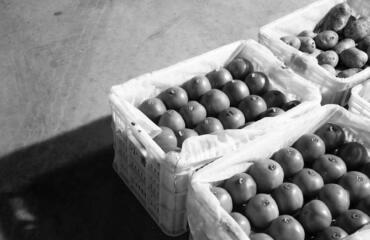In the industrialised city of Guiyang in south-west China, after a sip of coffee, 31-year-old Zoe Zhao starts her work day carefully measuring and cutting lace and floral fabric for a handbag.
Ignoring the sounds of the nearby construction of the Guiyang Rail Transit Line 3, the fabric design teacher focuses on meticulously creating one-of-a-kind items by hand, in some cases using centuries-old techniques of the Miao minority people of the region.
Ms Zhao’s studio, Zoe’s Handmade, has been operating for a year, servicing the growing need for people to seek some calm and stillness amid the rush of life in modern China.
“Most of my customers are young women and students,” Ms Zhao said. “Although making each item takes time, they enjoy the break from the fast pace of their daily lives.” At the studio in the Guiyang’s central business district, customers can make their own handmade items, under Ms Zhao’s careful guidance.
Ms Zhao also makes and sells handbags, cushions, toys and book covers through the studio and online.

“I feel happy and relaxed when doing handicrafts because I can get away from my work and relieve stress and emotions,” said Xiaorong Wang, a Zoe’s Handmade customer. “It also develops my hands-on skills and creativity. That is a great way to enjoy the weekend.”
Since 2015, Guiyang, the capital of Guizhou Province, has been transformed from a rural centre to a city of nearly 6 million people and a hub for transport, big data and industry.
The Guizhou government has forecast Guiyang will become a mega-city with an urbanisation rate of 80% by 2025. During 2016-20, the city’s economy grew at 9% to CNY431.165 billion (A$95 billion), according to data from Guiyang Municipal People’s Government. This puts the city in the top three economic powerhouses of China’s 28 capital cities.
As the city’s economy and large-scale expands, so does demand for handmade items. According to DianPing data, there are more than 100 brick-and-mortar shops in Guiyang’s city centre selling handmade bags, jewellery, mobile phone cases, candles, photo frames and ornaments.
Zoe’s Handmade customer Mengzi Li said she is hooked on making items by hand after initially being disinterested. “I found it fun to make an item by myself and I feel a sense of achievement after spending six hours make a bag myself,” she said.

Ms Zhao also said many parents bring their children to her studio to do crafts to develop their children’s patience and practical skills.
In a bid to keep her products affordable for parents and students, Ms Zhao operates her business with slim profit margins. She charges customers CNY 30 (A$6.65) for materials, workspace and supervision to make a 35cm by 35cm cushion at her studio.
Ms Zhao, who has been interested in crafts since childhood, graduated from the Central South University of Forestry and Technology in 2015, and went on to teach soft furnishing fabric design and production at a polytechnic college in Guiyang. She opened her studio a year ago to supplement her teaching income and share her love of handicrafts.
To attract more customers to her studio, Ms Zhao learned how to make Guizhou batik, a local fabric dyeing technique that dates back to the Song Dynasty, which lasted from 960 to 1279. Ms Zhao promotes this ancient craft, along with other more modern techniques and products, on social media platforms including WeChat and RED.
Ms Zhao said she averages five online orders a day. During high season, just before the start of each school semester, she receives up to 18 orders a day.
Regular customer Lin Yuan regularly buys book covers from Zoe’s Handmade before her son starts school each semester. She says: “I used to wrap the textbooks in the paper, whereas now I use batik book covers, which combine durability with the traditional features of Guizhou province.”
“My son also likes these covers and asks me to buy more for his classmates as gifts for the new semester,” Ms Yuan adds.

Handmade products are becoming increasingly popular as gifts for birthdays, Mother’s Day and Chinese New Year.
Over the past few years, street markets and outdoor bazaars have also become more commonplace in Guiyang, especially in the summer months. As well as stalls selling handmade items, the street markets feature locally made food, as well as singing and dancing performances and children’s entertainment.
Another local handicraft promoted by the Guizhou Provincial People’s Government is Miao embroidery, an intricate and colourful technique developed in Guizhou province and designated one of China’s five most famous embroidery techniques dating back to the Tang Dynasty (618 – 907AD).
Meanwhile, in her studio, seven hours after making the first cut of the floral fabric, Ms Zhao finishes the handbag, calls a courier and takes a final sip of coffee. She heads home happy that her beautiful handmade products will be delivered all over China over the next few days.





